- Tips for Caring for Indoor Plants in Winter
- 1. Provide Adequate Light
- 2. Adjust Watering Routine
- 3. Increase Humidity
- 4. Avoid Drafts
- 5. Protect from Temperature Fluctuations
- 6. Clean Dust off Leaves
- 7. Fertilize Sparingly
- Choosing the Right Location
- Adjusting Watering Routine
- 1. Monitor the moisture level
- 2. Adjust the frequency of watering
- 3. Use room temperature water
- 4. Consider a humidifier
- 5. Adjust for different plant needs
- Providing Adequate Humidity
- 1. Grouping Plants Together
- 2. Using a Tray of Water
- 3. Mist the Leaves
- 4. Use a Humidifier
- 5. Maintain Proper Ventilation
- Maintaining Optimal Temperature
- Pruning and Cleaning
- 1. Remove dead or diseased foliage
- 2. Trim leggy growth
- 3. Control size
- 4. Clean the foliage
- 5. Sterilize your tools
- 6. Dispose of pruned material properly
- Monitoring for Pests and Diseases
- Signs of Pests
- Monitoring Methods
- Treatment and Prevention
- Fertilizing Appropriately
- 1. Reduced Frequency
- 2. Diluted Solution
- 3. Balanced Fertilizer
- 4. Slow-Release Fertilizer
- 5. Follow Package Instructions
- 6. Avoid Fertilizing Stressed Plants
- Ensuring Sufficient Lighting
- 1. Place your plants near windows:
- 2. Use artificial lighting:
- 3. Choose suitable plants for low light conditions:
- 4. Reflect light with mirrors:
- 5. Clean your windows:
- Q&A:
- How often should I water my indoor plants during winter?
- Is it necessary to fertilize indoor plants during winter?
- How do I protect my indoor plants from cold drafts during winter?
- Should I prune my indoor plants in winter?
- What are some common signs of stress in indoor plants during winter?
- Video: MY SECRETS TO BIG MONEY PLANT (POTHOS) | MONEY PLANT CARE TIPS – COMPLETE GUIDE
As the temperatures drop outside, it is important to adjust your indoor plant care routine to ensure that your plants thrive throughout the winter months. Winter can be a challenging season for indoor plants, as the lower light levels and drier air can take a toll on their health. However, with a little extra care and attention, you can help your plants not only survive but thrive during this time.
One of the most important things to consider when caring for indoor plants in winter is light. With shorter days and less sunlight, it is crucial to provide your plants with as much light as possible. Place them near windows or use artificial light sources, such as grow lights, to supplement the natural light. Keep in mind that different plants have different light requirements, so make sure to research the specific needs of your plants.
In addition to light, another key factor to consider during the winter months is humidity. The dry air caused by indoor heating can be detrimental to your plants’ health. To increase humidity levels, you can mist your plants regularly or place them on a tray filled with water and pebbles. Another option is to use a humidifier to maintain a more consistent level of moisture in the air.
Watering is another aspect of plant care that should be adjusted during the winter season. As the growth rates of plants slow down during this time, they require less water. Be sure to check the moisture level of the soil before watering and only water when the top inch feels dry. Overwatering can lead to root rot, while underwatering can cause stress and damage to the plant.
By paying attention to these key factors – light, humidity, and watering – you can ensure that your indoor plants stay healthy and vibrant throughout the winter months. Remember to monitor your plants closely, as they may have different needs depending on the species. With a little extra care and attention, you can enjoy the beauty of your indoor garden even during the coldest months of the year.
Tips for Caring for Indoor Plants in Winter
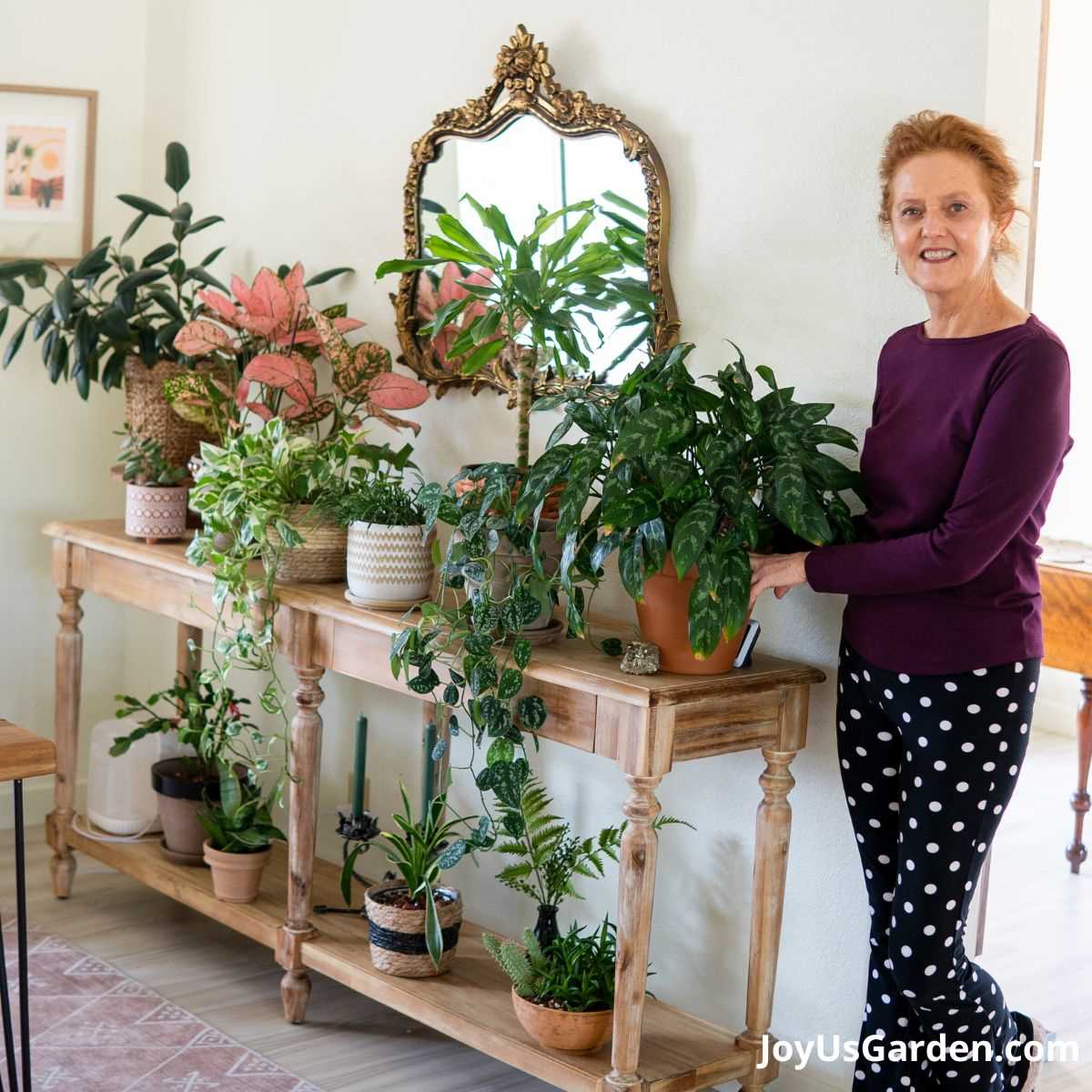
Winter can be a challenging time for indoor plants, as the dry air and lack of sunlight can take a toll on their health. But with the right care, you can help your plants thrive through the winter months. Here are some tips to keep your indoor plants happy and healthy:
1. Provide Adequate Light
During the winter, there is less natural light available for your plants. Place them near windows where they can receive as much sunlight as possible. If you don’t have enough natural light in your home, consider using artificial grow lights to supplement the light for your plants.
2. Adjust Watering Routine
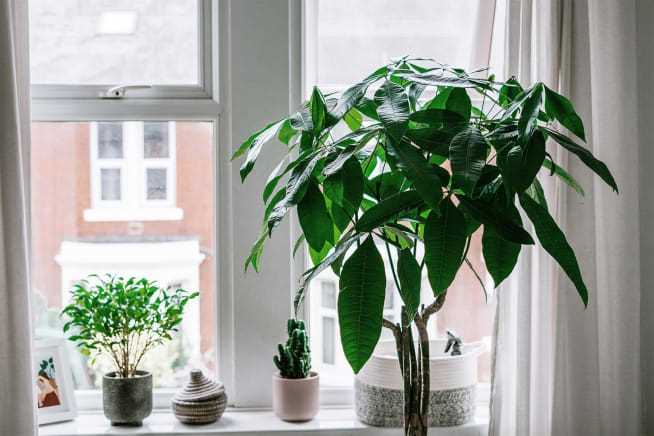
The watering needs of indoor plants change during the winter. Since plants receive less light and are less active, they require less water. Check the moisture level of the soil before watering and only water when it feels dry to the touch. Overwatering can cause root rot, so be cautious not to overdo it.
3. Increase Humidity
Indoor environments tend to be drier during the winter due to central heating systems. This dry air can be detrimental to your plants. Increase humidity around your plants by placing a humidifier nearby or by misting them regularly. You can also group your plants together, as they create a microclimate with increased humidity around them.
4. Avoid Drafts
Avoid placing your plants near drafty windows, doors, or vents as the cold air can damage them. Make sure your plants are not in the direct path of heating vents or radiators either, as the hot air can dry them out.
5. Protect from Temperature Fluctuations
Rapid temperature changes can stress indoor plants. Keep them away from drafts and make sure they are not exposed to extreme temperature fluctuations. Maintain a consistent temperature in the room where your plants are located.
6. Clean Dust off Leaves
Dust can accumulate on the leaves of indoor plants, which can inhibit their ability to absorb light. Gently wipe the leaves with a damp cloth or spray them with water to remove the dust. This will help the plants absorb more light and stay healthy.
7. Fertilize Sparingly
Indoor plants generally require less fertilizer during the winter months. Fertilize sparingly or not at all during this time. Too much fertilizer can cause salt build-up in the soil, which can damage the roots.
By following these tips, you can help your indoor plants survive and thrive during the winter months, ensuring that they will continue to bring beauty and fresh air into your home.
Choosing the Right Location
One of the most important aspects of caring for indoor plants during winter is choosing the right location for them. Here are some tips to help you choose the perfect spot:
Consider the light requirements: Different plants have different light needs. Some plants prefer bright, indirect light, while others thrive in low light conditions. Before placing your indoor plants, make sure you know their light requirements and choose a location accordingly.
Find a draft-free area: During winter, cold drafts can harm your indoor plants. Avoid placing them near windows or doors that are frequently opened. Find a spot in your home that is away from drafts to protect your plants from temperature fluctuations.
Maintain a suitable temperature: Most indoor plants prefer temperatures between 60-75°F (15-24°C). Make sure the location you choose provides a stable temperature within this range. Avoid placing your plants near heating vents or radiators, as the dry air can damage them.
Consider humidity levels: Winter air tends to be drier, which can affect indoor plants that require higher humidity levels. You can increase humidity by using a humidifier or placing a tray with water near your plants. You may also group plants together to create a microclimate with higher humidity.
Assess the space: Take into account the available space in your home. Make sure you choose a location that allows your plants to grow and spread their foliage without being cramped. Also, consider the weight of the plants and choose a location where the floor or shelf can support them.
By considering the light requirements, drafts, temperature, humidity, and available space, you can choose the right location for your indoor plants during winter. Providing them with the proper conditions will enhance their health and ensure they thrive throughout the season.
Adjusting Watering Routine
Watering is an essential aspect of caring for indoor plants, and it becomes even more important during the winter months. The primary goal is to avoid both overwatering and underwatering, as extreme conditions can be harmful to the plants.
1. Monitor the moisture level
It is crucial to keep an eye on the moisture level of the soil to determine the watering needs of your indoor plants. Stick your finger about an inch deep into the soil to check if it feels dry or moist. If it feels dry, it is time to water, and if it feels moist, you can wait a bit longer.
2. Adjust the frequency of watering
In winter, indoor plants tend to go into a state of dormancy and slow down their growth rate. As a result, they require less water compared to the warmer months. Adjust your watering routine accordingly by watering less frequently, allowing the soil to dry out between waterings.
3. Use room temperature water
During the winter months, the water from the tap can be cooler than usual. Avoid shocking the plant roots by using room temperature water when watering your indoor plants. This will help maintain a stable environment for the plants.
4. Consider a humidifier
The dry indoor air during winter can cause the soil to dry out more quickly, leading to the need for more frequent watering. To combat this, consider using a humidifier to increase the humidity levels in the room. This will help maintain the moisture in the soil and reduce the frequency of watering.
5. Adjust for different plant needs
Each indoor plant has different water requirements, even during the winter months. Some plants may require more frequent watering, while others may need less. Research the specific needs of your plants and adjust your watering routine accordingly to ensure their optimal health.
By adjusting your watering routine and paying attention to the moisture level of the soil, you can ensure that your indoor plants survive the winter months and thrive until spring arrives.
Providing Adequate Humidity
During the winter months, the air tends to be drier due to the use of indoor heating systems. This lack of humidity can be detrimental to your indoor plants, as they thrive in more moist environments. To ensure the health and well-being of your plants, it is important to provide adequate humidity.
1. Grouping Plants Together
One way to increase humidity around your indoor plants is to group them together. By clustering your plants, the moisture they release through transpiration will create a tiny microclimate of humidity between them. This can help to mimic the natural humid environment that many plants prefer.
2. Using a Tray of Water
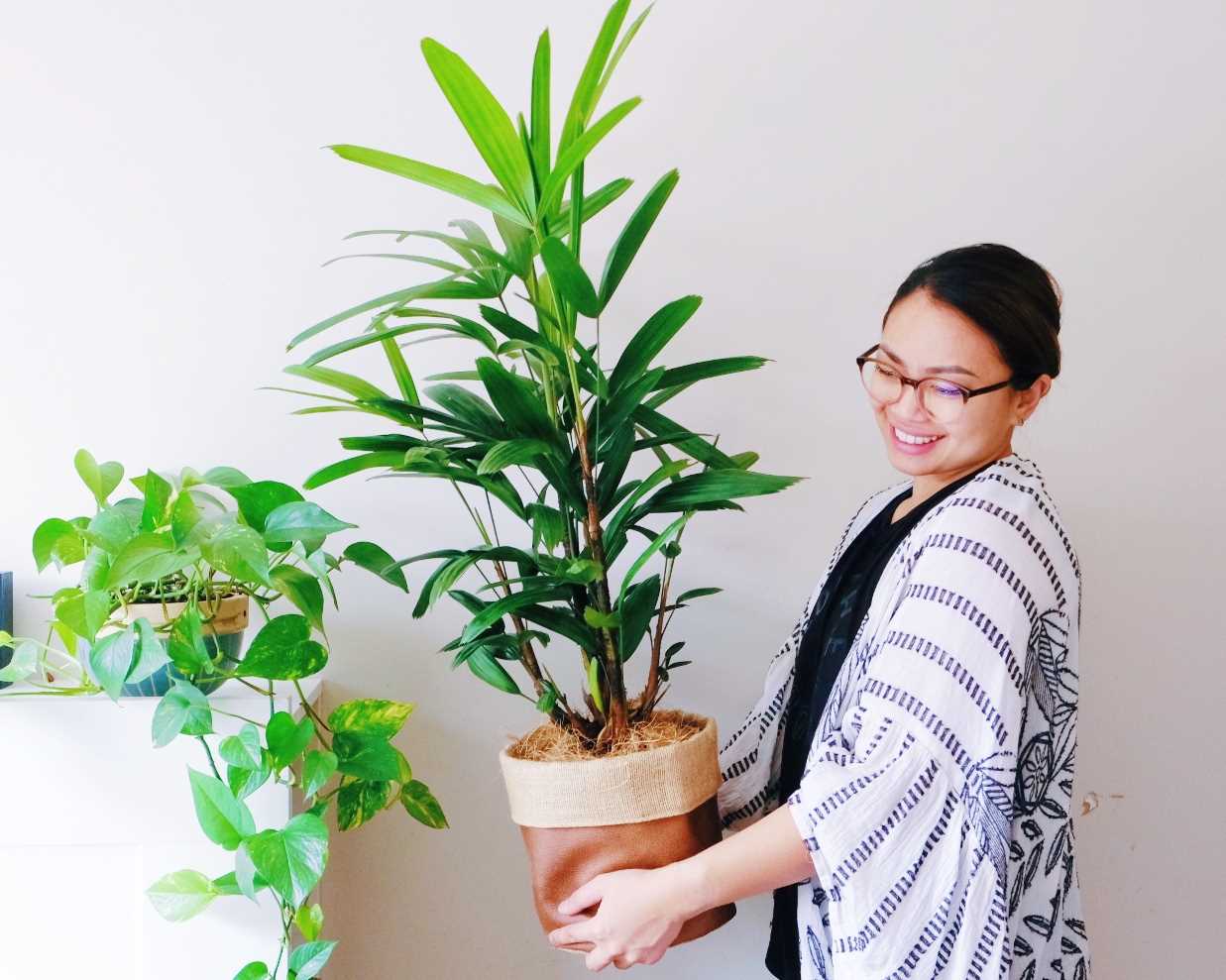
Another simple method to increase humidity is by placing a tray of water near your plants. As the water evaporates, it adds moisture to the air. Be sure not to place the plants directly on top of the tray, as this can lead to overwatering and root rot. Instead, let the water evaporate naturally into the air.
3. Mist the Leaves
Misting the leaves of your plants can also help to increase humidity around them. Use a spray bottle filled with water to mist the leaves a few times a week. Be careful not to mist too often, as this can lead to fungal diseases. Additionally, some plants, such as succulents, do not tolerate misting well and may be damaged by it.
4. Use a Humidifier
If you have a large collection of indoor plants or live in an area with extremely dry air, consider using a humidifier. A humidifier can help to maintain a consistent level of humidity in the air, which is especially beneficial for plants that require higher humidity levels. Place the humidifier near your plants or in the room where they are located for best results.
5. Maintain Proper Ventilation
While it is important to provide adequate humidity, it is equally important to maintain proper ventilation. Stagnant air can lead to problems such as mold and fungal growth. Make sure there is sufficient airflow in the room to prevent these issues. Open a window or use a fan to keep the air circulating.
By providing adequate humidity for your indoor plants, you can help them thrive during the dry winter months. Experiment with different methods to find what works best for your specific plants and environment. With a little extra care, your plants can continue to bring beauty and greenery to your home all year round.
Maintaining Optimal Temperature
During winter, it is important to provide your indoor plants with the right temperature conditions to ensure their growth and health. Here are some tips for maintaining optimal temperature:
- Find the Ideal Spot: Locate a spot in your home that provides the right temperature for your plants. Most indoor plants prefer temperatures between 60°F to 75°F (15°C to 24°C). Avoid placing them near drafty areas or sources of heat, such as radiators or vents.
- Monitor the Temperature: Use a thermometer to measure the temperature in different areas of your home. Check the temperature near your plants regularly to ensure it stays within the preferred range. Consider using a digital thermometer with a remote display for convenience.
- Adjust Heating Systems: If your heating system causes the temperature to rise above the preferred range, consider adjusting it or using a space heater with a thermostat to regulate the temperature. You can also use curtains or blinds to insulate your plants from direct heat sources.
- Use Heat Mats: If the temperature drops below the preferred range, you can use heat mats or heating pads specifically designed for plants. Place the heat mats under the pots to provide gentle warmth to the root zone.
- Consider Artificial Lighting: In areas with extremely low temperatures or insufficient natural light, you can supplement your plants’ lighting needs with artificial lights. LED grow lights are energy-efficient and provide the right spectrum of light for photosynthesis.
- Group Plants Together: Grouping plants together can create a microclimate that helps to maintain higher humidity and temperature levels. The plants release moisture through transpiration, which increases the humidity around them and helps to regulate the temperature.
By following these tips, you can create the ideal temperature conditions for your indoor plants during the winter months. Remember that different plants may have specific temperature requirements, so it’s important to research each plant’s preferences and adjust accordingly.
Pruning and Cleaning
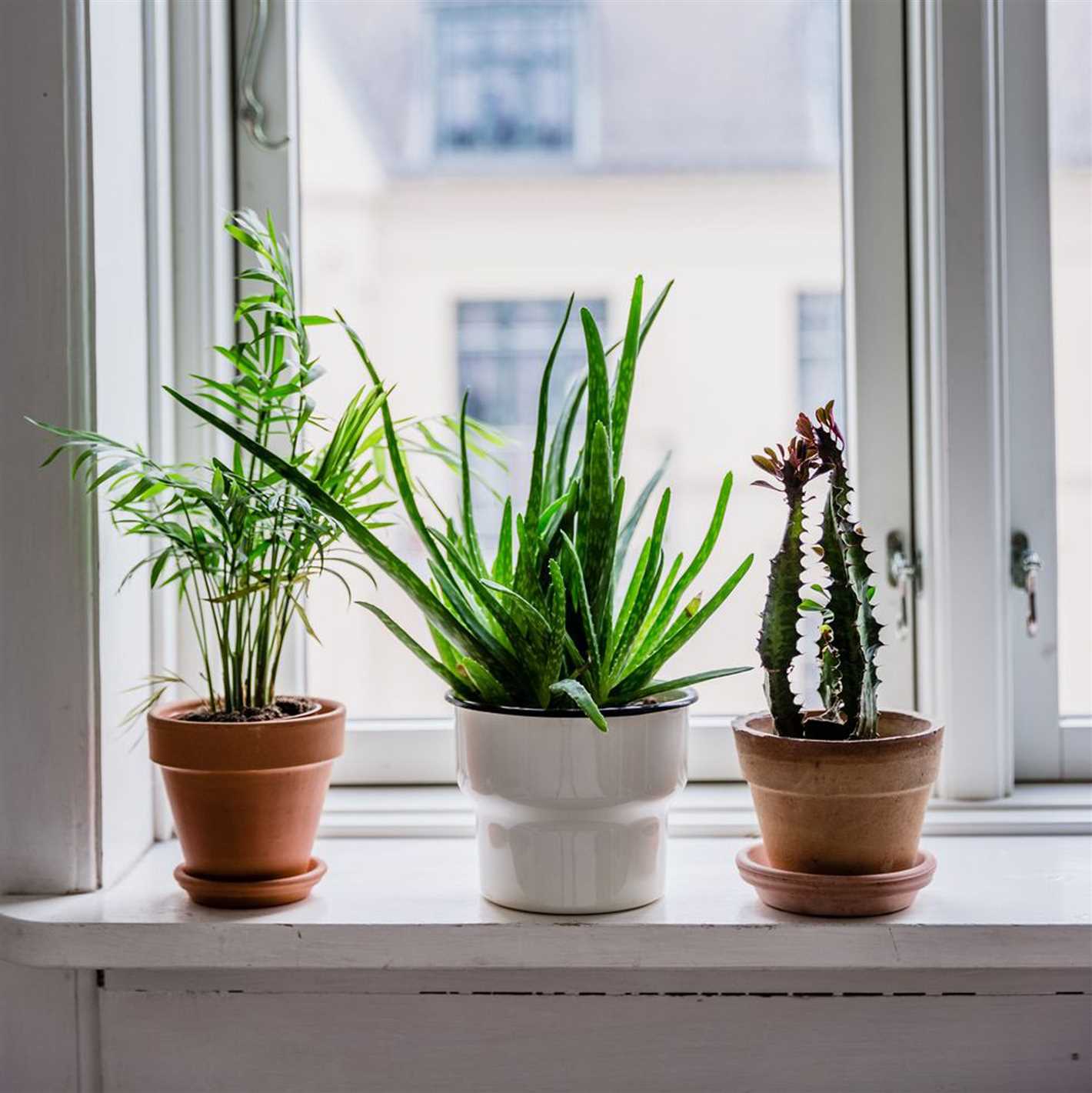
During the winter months, it’s important to prune and clean your indoor plants to promote healthy growth and prevent the spread of diseases. Here are some essential tips for pruning and cleaning your plants:
1. Remove dead or diseased foliage
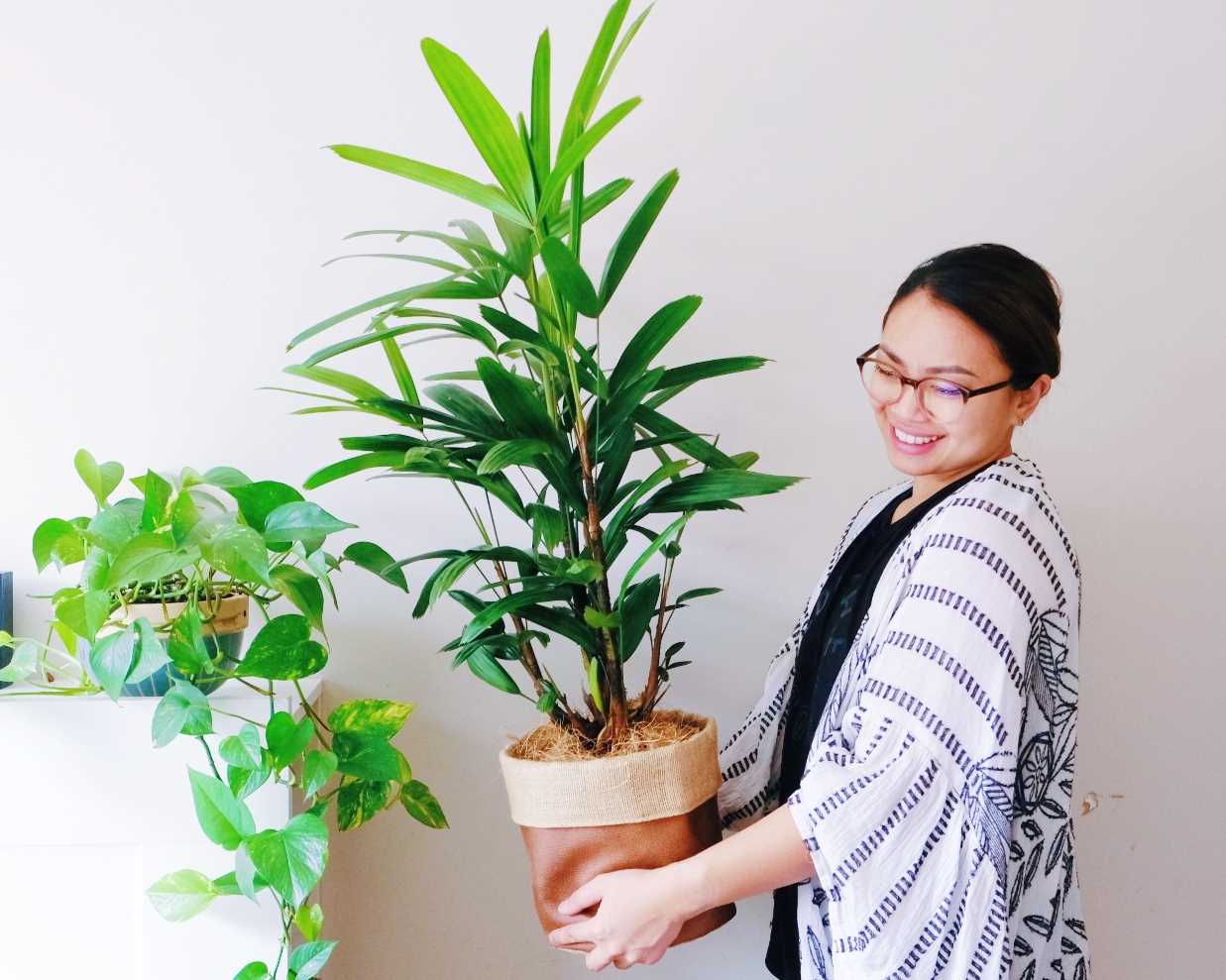
Inspect your plants regularly and remove any dead or diseased leaves or stems. These can attract pests and hinder the overall health of your plants. Use sharp, clean scissors or pruners to make precise cuts at the base of the affected foliage.
2. Trim leggy growth
Indoor plants tend to grow leggy and straggly during the winter due to limited sunlight. To maintain their bushy appearance, prune back any long, thin stems by cutting just above a leaf node. This will encourage new growth and help your plants maintain their shape.
3. Control size
If your plants have outgrown their current pots, winter is a good time to prune them back. Reduce the overall size of the plant by cutting back the stems and foliage. This will not only help control its growth but also make repotting easier once the warmer months arrive.
4. Clean the foliage
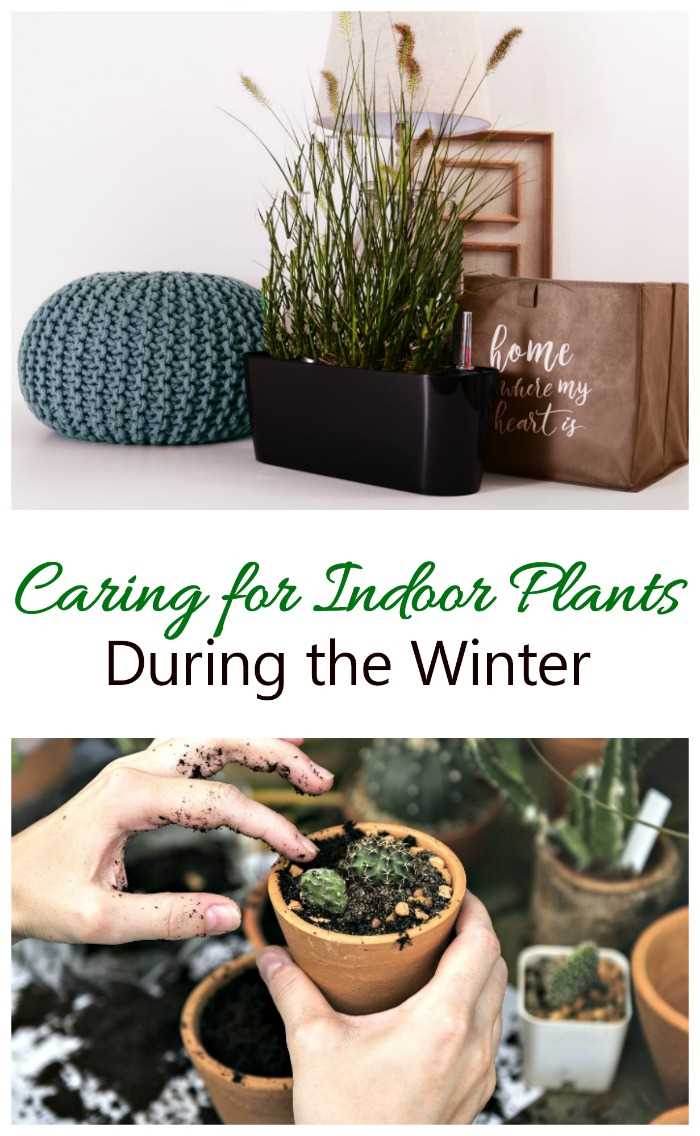
Dust can accumulate on the leaves of indoor plants, clogging their pores and hindering their ability to photosynthesize. To keep your plants healthy, wipe the foliage gently with a damp cloth or sponge to remove the dust. This will also improve the overall appearance of your plants.
5. Sterilize your tools
After each pruning session, it’s important to sterilize your tools to prevent the spread of diseases. Clean your scissors or pruners with rubbing alcohol or a bleach solution diluted in water. This will ensure that you don’t accidentally transmit any pests or infections to your plants.
6. Dispose of pruned material properly
Remember to dispose of the pruned plant material properly. If the foliage is diseased, it’s best to seal it in a plastic bag and discard it in the trash to prevent the spread of diseases. If the material is healthy, you can add it to your compost pile or use it as mulch in your garden.
By following these pruning and cleaning tips, you’ll be able to keep your indoor plants healthy and vibrant throughout the winter months.
Monitoring for Pests and Diseases
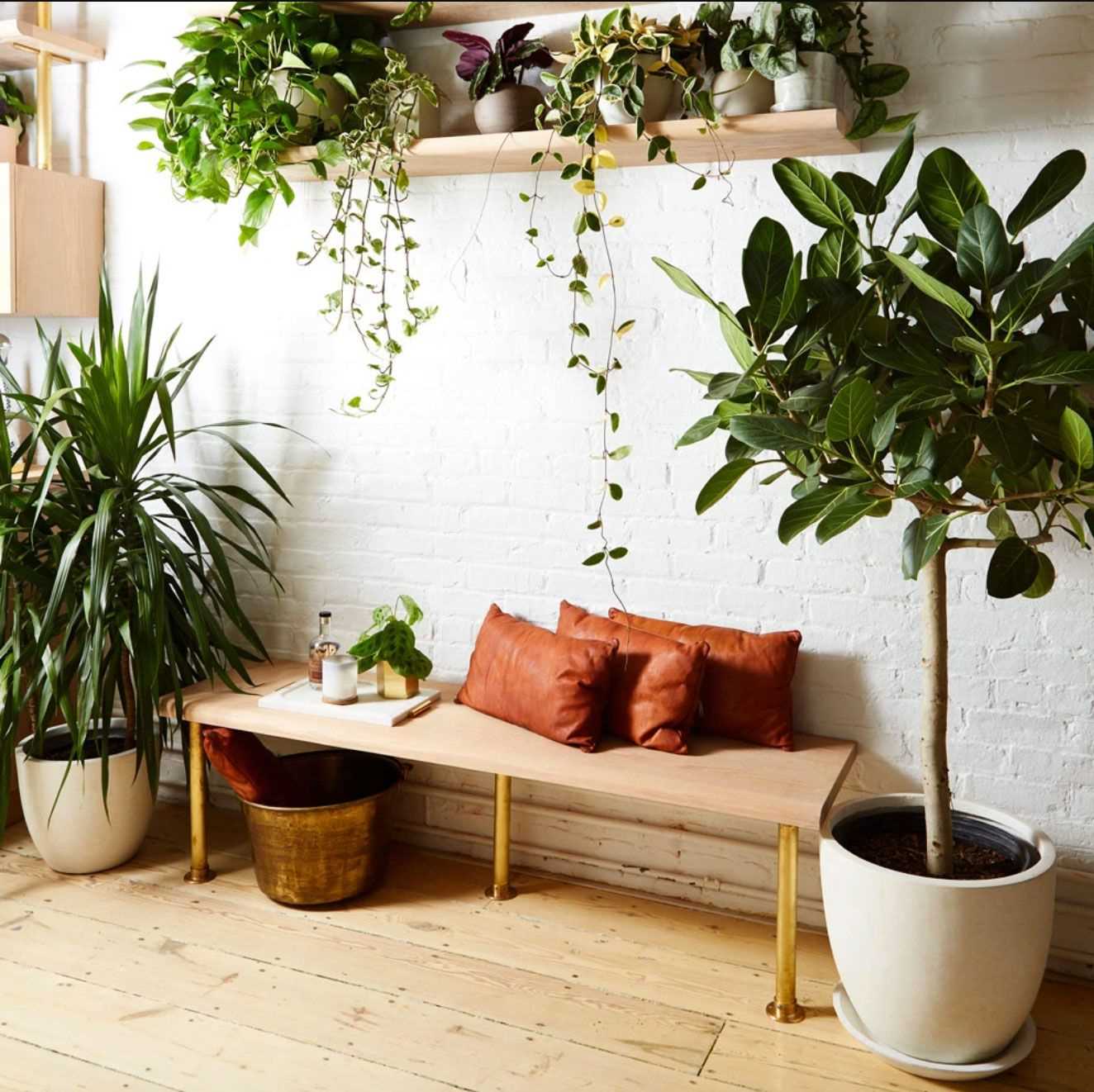
It is important to monitor your indoor plants for pests and diseases, especially during the winter months when they may be more vulnerable. Pests such as aphids, spider mites, and whiteflies can infest your plants and cause damage if not detected early. Diseases such as powdery mildew and root rot can also affect your plants if not treated promptly.
Signs of Pests
Keep an eye out for the following signs that your plants may have pests:
- Yellowing or discolored leaves
- Wilting or drooping foliage
- Sticky residue on leaves or nearby surfaces
- Tiny insects crawling on the plant
- Webbing or silk-like threads on the plant
Monitoring Methods
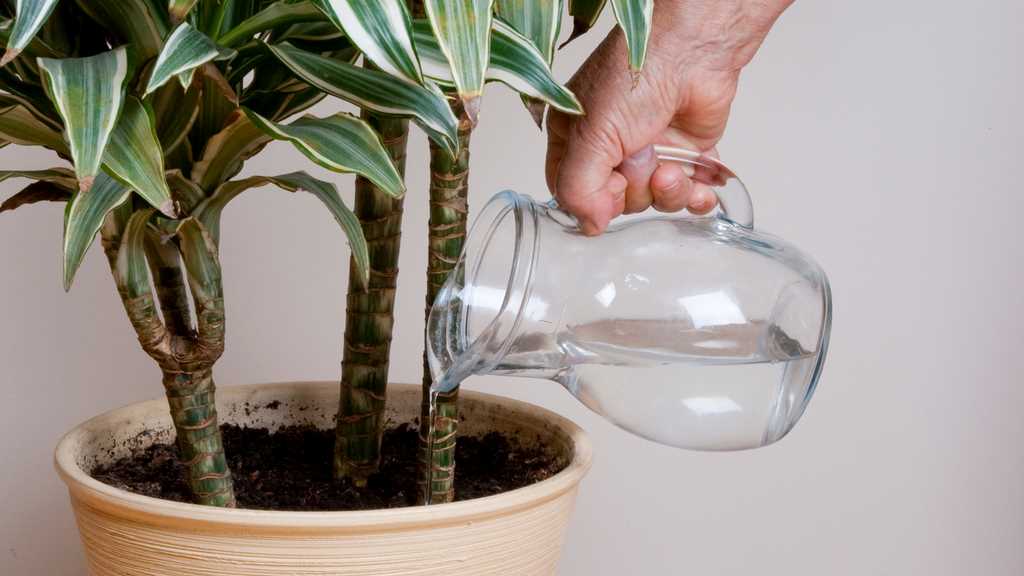
Here are some methods you can use to monitor your plants for pests and diseases:
- Regularly inspect your plants by visually examining the leaves, stems, and soil.
- Use a magnifying glass to look for tiny insects or any signs of damage.
- Place sticky traps near your plants to catch flying insects.
- Monitor the soil moisture levels to prevent overwatering, which can lead to root rot.
- Keep a plant diary to track any changes in your plants’ health and note any unusual symptoms.
Treatment and Prevention
If you detect pests or diseases on your indoor plants, it is important to take immediate action to prevent further damage. Here are some treatment and prevention methods:
- Remove and isolate affected plants to prevent the spread of pests or diseases to other plants.
- Use natural or organic pest control methods such as insecticidal soaps or neem oil.
- Prune infected leaves or stems to remove the source of infection.
- Adjust environmental conditions such as humidity or temperature to discourage pests or diseases.
- Ensure good air circulation around your plants to prevent the growth of mold or mildew.
By regularly monitoring your indoor plants for pests and diseases, you can catch any issues early and take the necessary steps to keep your plants healthy throughout the winter season.
Fertilizing Appropriately
Fertilizing indoor plants during winter requires a different approach compared to other seasons. Here are some key points to keep in mind:
1. Reduced Frequency
In winter, plants go through a period of dormancy, where their growth slows down. As a result, they require less fertilizer. Reduce the frequency of fertilization to avoid overfeeding the plants.
2. Diluted Solution
When fertilizing during winter, it’s best to use a diluted fertilizer solution. This helps prevent root burn and provides the plants with the necessary nutrients without overwhelming them.
3. Balanced Fertilizer
Choose a balanced fertilizer that contains equal amounts of nitrogen, phosphorus, and potassium. This ensures that the plants receive a well-rounded nutritional boost during the winter months.
4. Slow-Release Fertilizer
Consider using slow-release fertilizers during winter. These fertilizers provide continuous nourishment to the plants over an extended period. They are especially beneficial for plants that have prolonged dormant periods.
5. Follow Package Instructions
Always read and follow the instructions on the fertilizer package. Different fertilizers have varying application rates and instructions. Following the package instructions ensures you are using the correct amount and frequency of fertilization for your indoor plants.
6. Avoid Fertilizing Stressed Plants
If your indoor plants are already stressed due to low light or fluctuating temperatures, it’s best to avoid fertilizing them during this period. Focus on providing the plants with adequate light and stable temperatures to help them recover before resuming regular fertilization.
By following these tips, you can ensure that your indoor plants receive the appropriate amount of nutrients during the winter months, promoting their health and vitality.
Ensuring Sufficient Lighting
During the winter months, natural light is often limited, which can be problematic for indoor plants that require a lot of sun. It is important to provide sufficient lighting for your plants to help them survive and thrive throughout the colder season. Here are some tips to ensure your plants get enough light:
1. Place your plants near windows:
Choose a window that receives the most sunlight during the day and place your plants nearby. This will allow them to take advantage of any available natural light. Be sure to rotate your plants regularly to ensure all sides receive some exposure to sunlight.
2. Use artificial lighting:
If your plants aren’t getting enough natural light, consider using artificial lighting to supplement their lighting needs. LED grow lights or fluorescent lights can provide the necessary spectrum of light for plants to grow and flourish. Place the lights close to the plants and keep them on for approximately 12-16 hours a day.
3. Choose suitable plants for low light conditions:
If you have limited natural light in your home, it’s a good idea to choose plants that can tolerate low light conditions. Some examples of plants that thrive in low light include snake plants, pothos, peace lilies, and ZZ plants. These plants can still grow well with minimal sunlight.
4. Reflect light with mirrors:
If your plants are not receiving enough light from one window, you can try using mirrors to reflect sunlight onto them. Place a mirror opposite the window to help redirect and amplify the natural light available.
5. Clean your windows:
Make sure your windows are clean and free from dust and dirt. Dirty windows can block the sunlight from entering your home. Regularly clean both the inside and outside of your windows to maximize the amount of light that reaches your plants.
By following these tips, you can provide your indoor plants with sufficient lighting during the winter months, allowing them to continue thriving and remaining healthy.
Q&A:
How often should I water my indoor plants during winter?
The watering frequency for indoor plants in winter may differ depending on various factors such as plant type, pot size, and humidity levels. Generally, you should allow the top inch of soil to dry out before watering. In winter, the plants may require less frequent watering compared to other seasons.
Is it necessary to fertilize indoor plants during winter?
Fertilizing indoor plants during winter is not necessary as the plants tend to enter a period of dormancy. They require less nutrients during this time. If you feel the need to fertilize, do it sparingly with a diluted fertilizer, as over-fertilization can harm the plants.
How do I protect my indoor plants from cold drafts during winter?
To protect your indoor plants from cold drafts during winter, you can move them away from windows and doors, which are the common sources of drafts. Placing them in a more sheltered area of the room or using curtains to block the cold air can also be effective. It is important to avoid placing the plants near heating vents as well, as the hot air can dry them out.
Should I prune my indoor plants in winter?
It is generally not recommended to prune indoor plants in winter as they tend to grow slower during this time. Pruning can stimulate new growth, which may be more vulnerable to cold temperatures and lower light levels. However, if you notice any dead or damaged parts, it is advisable to remove them to maintain the health of the plants.
What are some common signs of stress in indoor plants during winter?
Some common signs of stress in indoor plants during winter include yellowing or dropping leaves, stunted growth, wilting, and an overall dull appearance. These symptoms may indicate that the plants are not receiving adequate light, or that the temperature or humidity levels are not suitable for their needs. Adjusting the care routine accordingly can help alleviate the stress and improve the plant’s condition.
Video:
MY SECRETS TO BIG MONEY PLANT (POTHOS) | MONEY PLANT CARE TIPS – COMPLETE GUIDE







